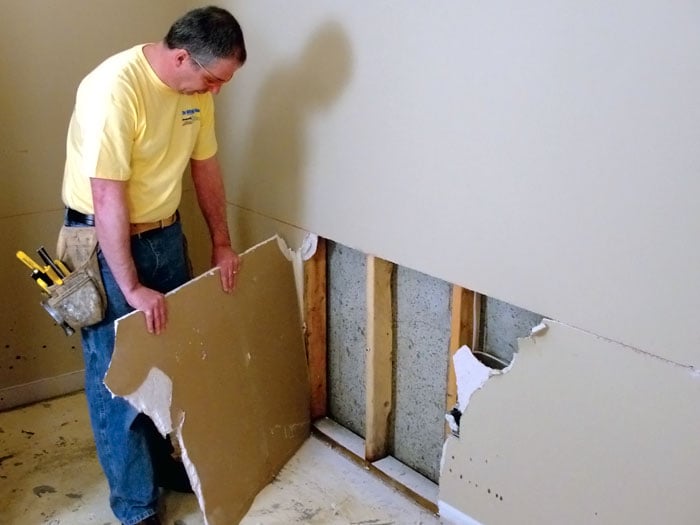A water leak, no matter how small, can do a lot of damage to
your drywall. Imagine losing an entire ceiling because the drywall collapsed
after losing its fight against the weight of the water and gravity. So if you
notice small dimples on your ceiling, that’s because the drywall surrounding
the nails or screws has started to droop. But no worries, because you have the
option to have it repaired before worse things could happen.
How to Repair Water-Damaged Drywall
First things first. Make sure that the drywall is literally dry inside and out before restoring,
repainting, or recovering it. The exterior may be dry but the materials inside
may still be wet—and drying it completely may take weeks or even months. If
there’s enough dry air that can circulate through the studding and wall
materials, the faster the water can dry up. But if not and you want to prevent
a serious problem at home, you might need to call a disaster restoration
service company like ServiceMaster
of Charleston to do the job for you. It’s better to be safe than sorry
because you may think that it wasn’t a lot of water leakage, but it doesn’t
take a lot to form a disaster.
For DIY water-damaged drywall repair, remove the drywall,
laminated paneling, and plaster that the water was able to reach. Remove more
than the actual water level as it may have been affected as well. Remove the
baseboard from the paneled walls and separate each sheet of paneling to allow
them to dry. A word of caution: Let the panels air dry without sunlight or else
they could warp. If there are sidings that cracked or warped, they have to be
replaced.
Wet insulation within
the drywall has to be removed and replaced. You wouldn’t want to have a
mold infestation or odor problems. If your wall has vinyl-coated wallpaper,
this can stop your soaked walls from drying completely, so you have to remove
it as well.
Lastly, check the
sheathing found between the studding and siding if it’s already
disintegrating. The sheathing board is so absorbent that it is very difficult
to dry. You may as well go ahead and replace it. If the sheathing is made of
wood, it’ll also dry slowly and even warp. If it’s too badly warped, you might
as well replace it. Marine plywood is the best option because it doesn’t warp
or disintegrate, but it’s also too expensive to use in houses.
Here’s a video on how to replace damaged
drywall with mold to give you a better idea on how to fix it.


Water damaged drywall should be repaired as soon as possible to prevent any long-term damage. Water Damaged Drywall professionals are experts in repairing and restoring drywall that has been damaged by water. They use specialized tools and equipment to remove the water, dry out the affected area, and restore the drywall to its original condition.
ReplyDeletePatch Boys Drywall Repair